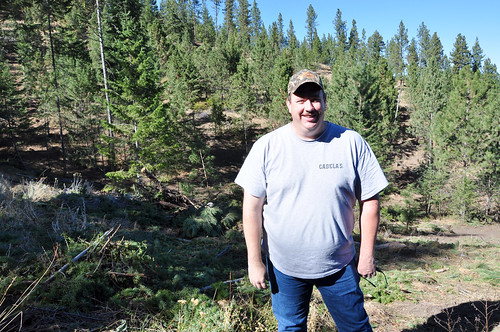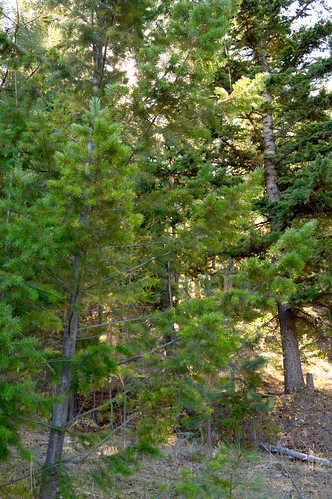
Like many woodland owners in eastern Oregon, Tim Fisher enjoys and appreciates the value wildlife brings to his 1,500-plus acres in Baker County.
“I love watching the elk up here,” he said as he drove his pickup truck up a steep dirt road on his property, a mountainous view surrounding him. “I come up here to watch them at sunrise, and it’s beautiful.”
Thanks to technical and financial assistance from USDA’s Natural Resources Conservation Service (NRCS), and help from other agencies, Fisher is doing work on his land to make wildlife habitat even better — while also reducing the risk of catastrophic wildfire.
Last year, contractors completed slash treatment on 232 acres of his land, opening up the canopy and putting much-needed space in between the trees. More work will continue this spring and summer.
“Just by opening the canopy of the trees, you bring tremendous benefits to the land,” Fisher said. “It reduces the risk for wildfire, it helps with soil erosion, the wildlife habitat stays intact, the trees grow taller and stronger, and the wood can become marketable timber.”
Fisher worked with local NRCS staff, the Oregon Department of Forestry and his contractor to identify tree stands for slashing that would yield the most effective results. Before contractors began work, the targeted area averaged 1,000 trees per acre. Afterward, the result was 150 to 250 trees per acre, with an average of 17 feet of spacing in between trees.

Contractors used a technique called slashbusting, which is almost what it sounds like --- a large excavator essentially “shreds” trees, leaving a scattered pile of nutrient-rich pieces behind. Those pieces decompose over time and return nutrients to the soil, which improves fertilization and reduces piling (think large piles of tree branches) compared to traditional hand-pile slashing.
“The elk and deer love this area now that it’s open,” Fisher said.
But habitat improvement isn’t the only benefit of slash treatment. The primary benefit is reducing the threat of catastrophic wildfire.
“Dense, overstocked forests pose a higher risk for catastrophic wildfire because the excess vegetation creates a fuel ladder, allowing fire to rise higher into the canopy where it causes the most damage,” said Parker Ussery, NRCS district conservationist. “By thinning timber stands, wildfire has less fuel to spread and we improve the overall resiliency of the forest.”
Projects like the one on Fisher’s land are part of the East Face of the Elkhorn Mountains project — a $2.6 million endeavor funded by NRCS and the U.S. Forest Service through the Chiefs’ Joint Landscape Restoration Partnership.
The East Face partnership combines the skills and expertise of the NRCS, ODF, the Forest Service, the Oregon Department of Fish and Wildlife and the Bureau of Land Management. Together, these partners identified more than 47,000 acres in Oregon’s Wallowa-Whitman National Forest and BLM lands to target for fuels reduction and forest stand improvements, as well as adjacent private lands.
This project is a good example of Chiefs’ Joint Landscape Restoration Partnership at work and one of 13 funded in fiscal 2014. This week, NRCS and Forest Service announced their plans to invest $10 million in 15 new projects, which are leveraging an additional $5 million from partners.

